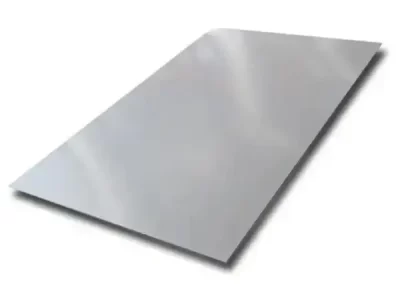
302 stainless steel is a popular austenitic stainless steel containing 18% chromium and 8% nickel. Its excellent corrosion resistance makes it suitable for various applications, including food processing equipment, automotive parts and medical devices. One of the key properties of stainless steel 302 is its high strength-to-weight ratio, which makes it ideal for structural applications where weight reduction is required. In addition, 302 stainless steel has good toughness and ductility at low temperatures. Another important property of 302 is its resistance to oxidation or rust even when exposed to harsh environmental conditions such as salt water or acidic solutions. This property makes it an excellent choice for marine industry components such as ship fittings and hardware.
Additionally, 302 Stainless Steel has excellent weldability and formability, allowing it to be easily formed into different structures while maintaining its durability. Its machinability also provides an added advantage by enabling precision manufacturing techniques on complex designs.
The combination of a high strength-to-weight ratio, corrosion resistance and favorable welding properties make 302 Stainless Steel a versatile material for many industries.
302 Stainless Steel Composition
| Element | Percent |
|---|---|
| Carbon | 0.15 |
| Chromium | 17.0-19.0 |
| Nickel | 8.0-10.0 |
| Manganese | 2.00 |
| Silicon | 0.75 |
| Nitrogen | 0.10 |
| Phosphorus | 0.045 |
| Sulfur | 0.030 |
302 Stainless Steel Mechanical Properties
| Mechanical Property | Value |
|---|---|
| Yield Strength, min. (Mpa) | 205 |
| Tensile Strength, min. (Mpa) | 515 |
| Elongation, min. (%) | 40 |
| Hardness, max. (Rb) | 92 |
302 Stainless Steel Physical Properties
| Physical Properties | Value |
|---|---|
| Density, lb/in3 | 0.29 |
| Modulus of Elasticity, psi | 29.0 x 106 |
| Coefficient of Thermal Expansion, 68-212˚F, /˚F | 9.2 x 10-6 |
| Thermal Conductivity, Btu/ft hr ˚F | 9.4 |
| Specific Heat, Btu/lb ˚F | 0.12 |
| Electrical Resistivity, Microohm-in | 27.4 |
Forms
302 Stainless Steel Specifications
- ASTM A240/A240M, Standard Specification for Chromium and Chromium-Nickel Stainless Steel Plate, Sheet, and Strip for Pressure Vessels and for General Applications
- ASTM A480/A480M, Standard Specification for General Requirements for Flat-Rolled Stainless and Heat-Resisting Steel Plate, Sheet, and Strip
- ASTM A666, Standard Specification for Annealed or Cold-Worked Austenitic Stainless Steel Sheet, Strip, Plate, and Flat Bar
302 vs 304 Stainless Steel
- Carbon content: 302 stainless steel has a higher carbon content, while 304 stainless steel has a lower carbon content. 1
- Corrosion resistance: Because of the higher chromium and nickel content of 304 stainless steel, its corrosion resistance is better than that of 302 stainless steel. 1
- Machinability: 304 stainless steel has better machinability and weldability due to its lower carbon content and higher chromium and nickel content.
- Price: Due to the superior composition of 304 stainless steel, its price is usually higher than 302 stainless steel.
302 vs 316 Stainless Steel
Composition
The main components of 302 stainless steel include iron, chromium, nickel and carbon, with a higher carbon content, usually between 0.15% and 0.25%. 316 stainless steel, on the other hand, contains more chromium (about 16%), nickel (about 10%), and molybdenum (about 2%), which gives 316 stainless steel better corrosion resistance.
Corrosion Resistance
Intergranular corrosion may occur in 302 stainless steel under certain conditions, especially in welded areas. This is because the welding thermal effect causes the temperature of the dissolution zone to enter the sensitized temperature zone of 302 stainless steel, causing an intergranular chromium-depleted zone, which triggers intergranular corrosion. In contrast, 316 stainless steel effectively inhibits intergranular corrosion and improves the tendency to stress corrosion through the addition of molybdenum, and therefore performs better in terms of corrosion resistance.
FAQ
Stainless steel 302 is non-magnetic. Stainless steel 302 is an austenitic steel with non-magnetic properties.
